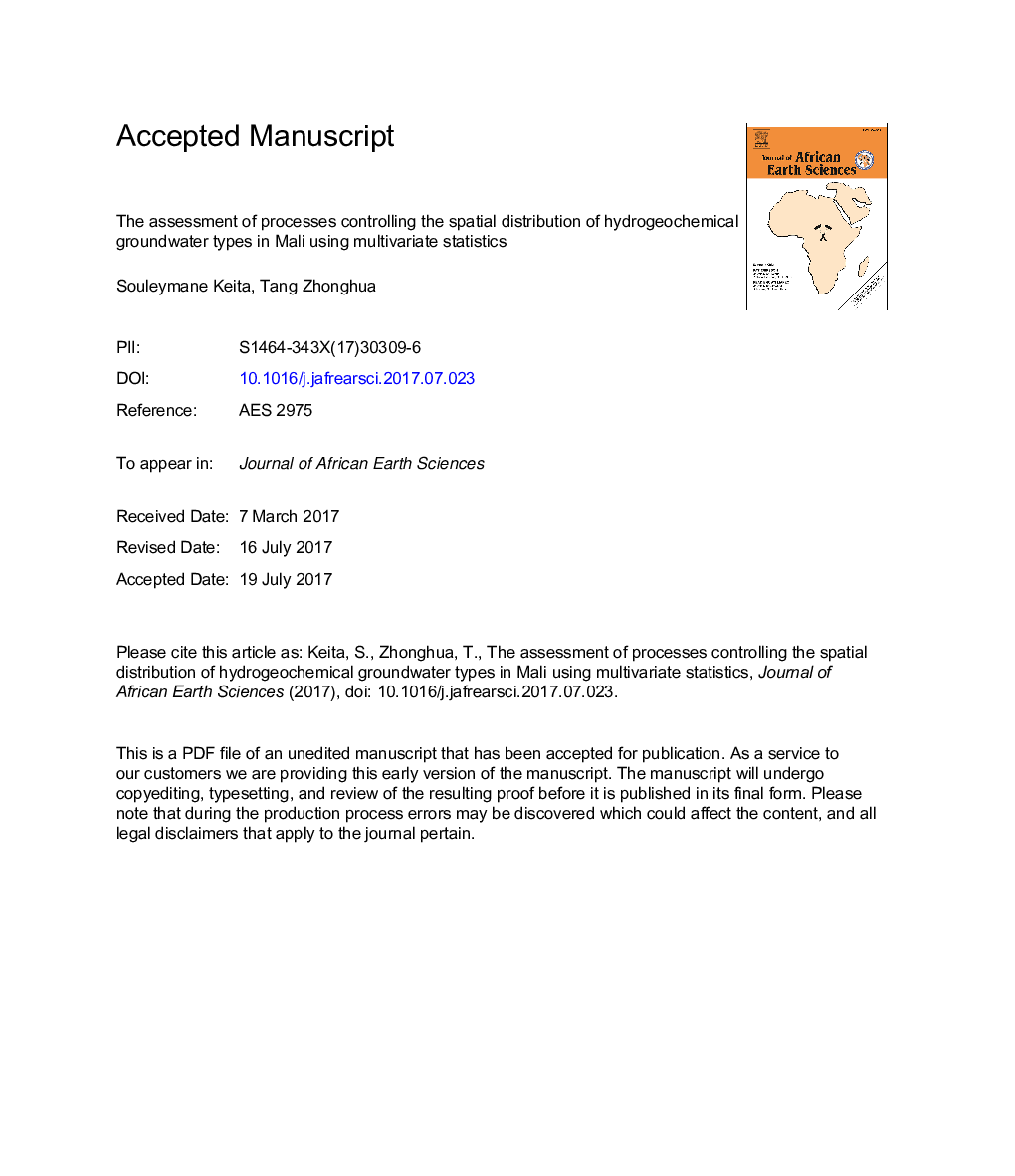| Article ID | Journal | Published Year | Pages | File Type |
|---|---|---|---|---|
| 5785584 | Journal of African Earth Sciences | 2017 | 44 Pages |
Abstract
In this paper, we used groundwater analytical data from accredited, laboratories in Mali to carry out a national scale assessment of the groundwater types and their distribution. We, adapted multivariate statistical methods to classify 2035 groundwater samples into seven main groundwater types and built a national scale map from the results. We used a two-level K-mean clustering technique to examine the hydro-geochemical records as percentages of the total concentrations of major ions, namely sodium (Na), magnesium (Mg), calcium (Ca), chloride (Cl), bicarbonate (HCO3), and sulphate (SO4). The first step of clustering formed 20 groups, and these groups were then re-clustered to produce the final seven groundwater types. The results were verified and confirmed using Principal Component Analysis (PCA) and RockWare (Aq.QA) software. We found that HCO3 was the most dominant anion throughout the country and that Cl and SO4 were only important in some local zones. The dominant cations were Na and Mg. Also, major ion ratios changed with geographical location and geological, and climatic conditions.
Related Topics
Physical Sciences and Engineering
Earth and Planetary Sciences
Geology
Authors
Souleymane Keita, Tang Zhonghua,
